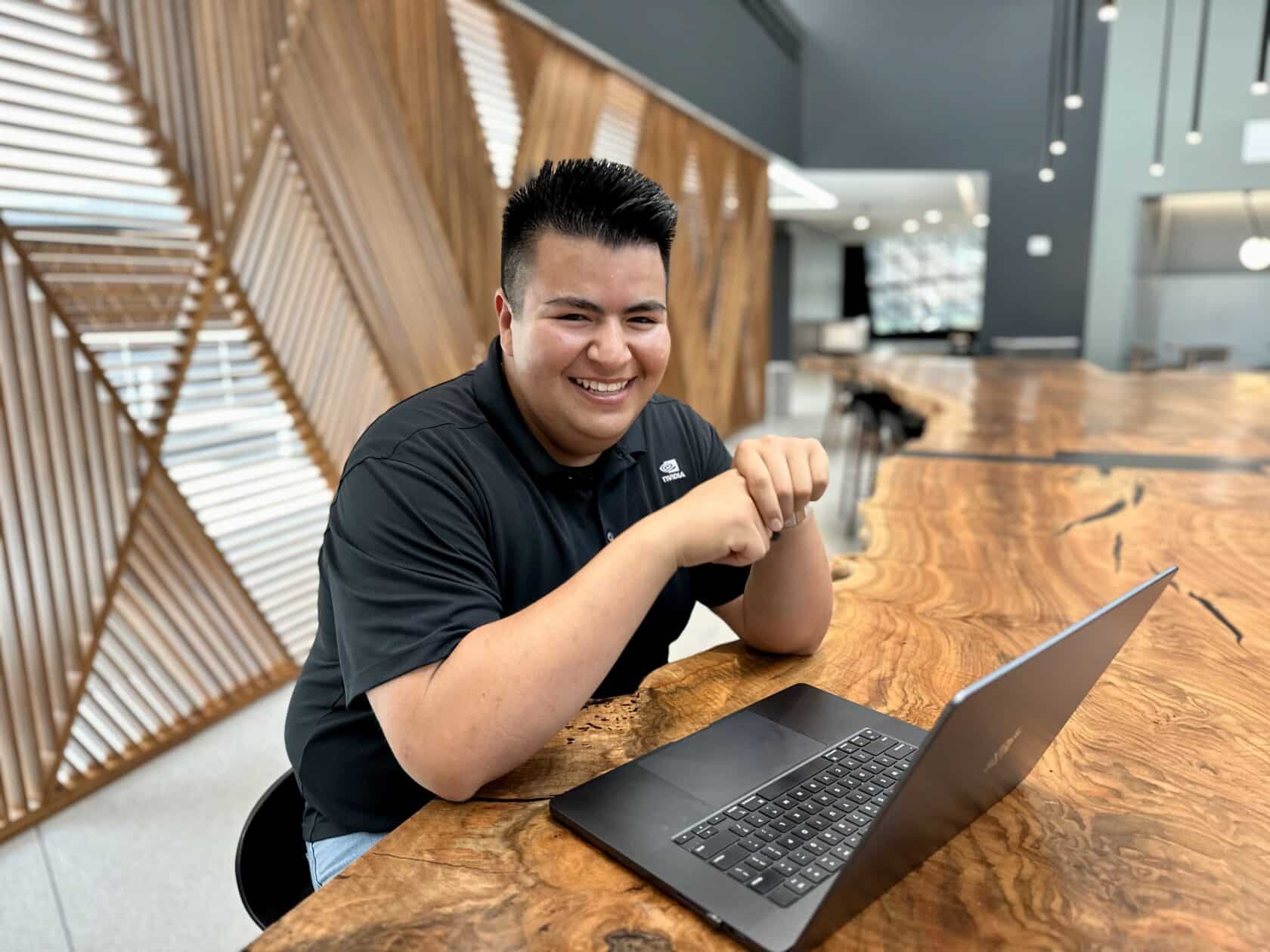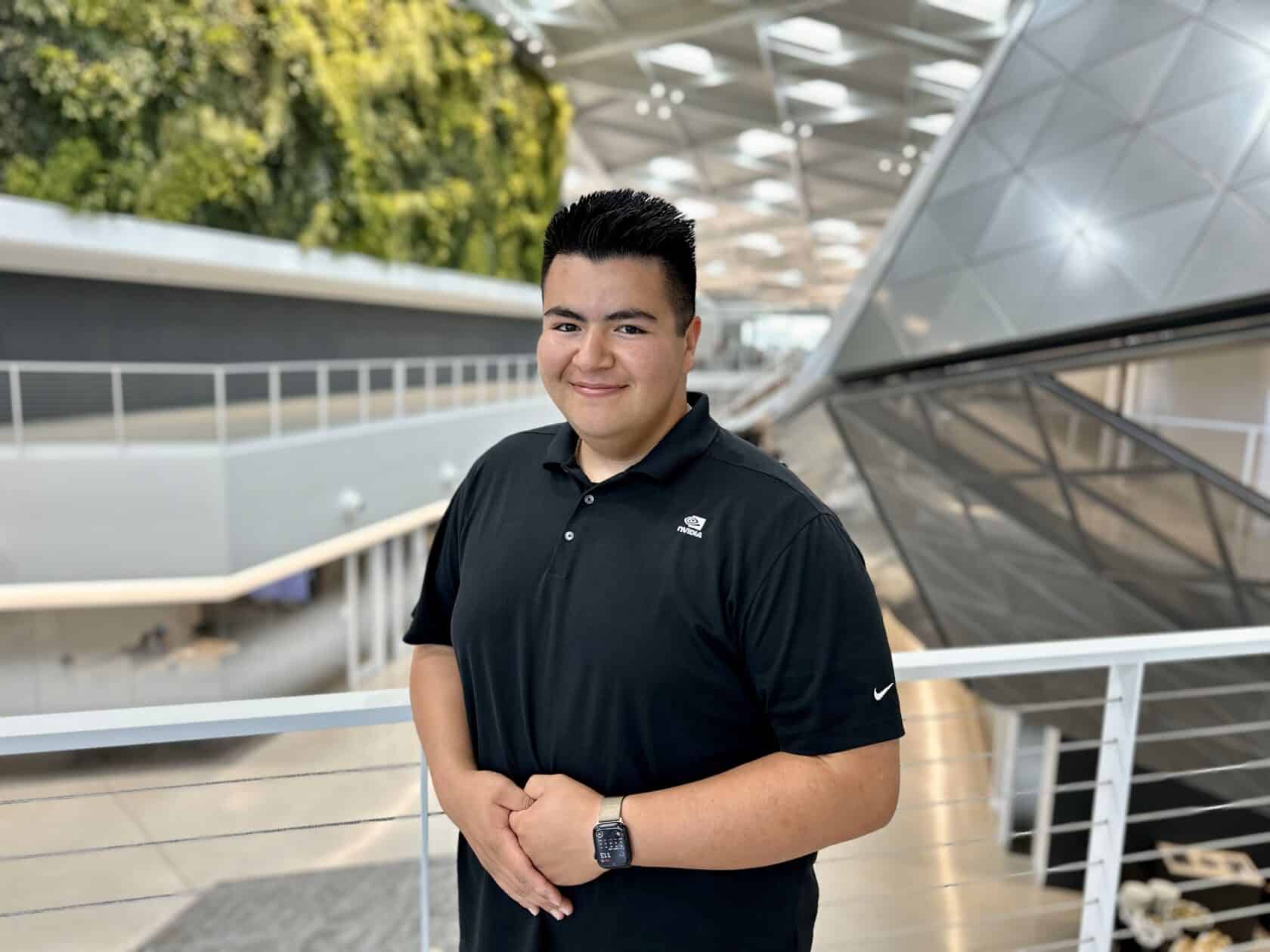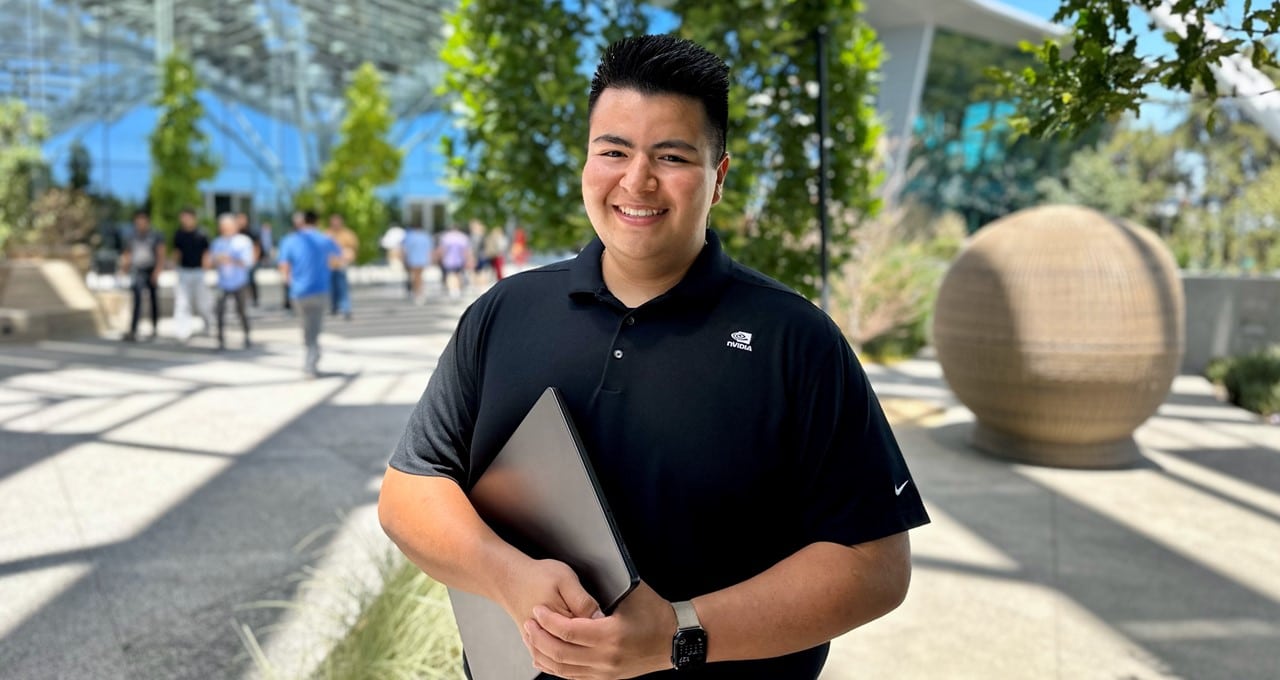Inaki Madrigal applied to NVIDIA several times over the course of his college career. An avid gamer, he’d been using NVIDIA products for over a decade and was determined to be a part of the company’s work developing transformative technologies.
Following his graduation from California Polytechnic State University, San Luis Obispo, with a computer engineering degree — and a few summer internships at another company under his belt — Madrigal joined NVIDIA as a full-time solutions architect in 2021.
“As a new college grad, my impact at NVIDIA is exponentially higher than it would be anywhere else,” he said. “I’ve had a wide range of opportunities to work on projects across our business and make a real impact since day one.”

Madrigal started off in the new college graduate solutions architect rotation program, where he was exposed to technologies across the company over the course of 18 months. Solutions architects help solve customer challenges with NVIDIA technologies and bring them to the attention of NVIDIA’s internal engineering teams, facilitating collaboration to develop new product features.
During the program, Madrigal gained first-hand exposure to areas including machine learning operations, NVIDIA AI Enterprise, NVIDIA Omniverse, hardware engineering, supercomputing and data center systems.
After rotating through different aspects of the program, solutions architects can choose their focus area. Madrigal picked an AI infrastructure role, where he could support cloud service providers as they set up infrastructure, build AI models and optimize system performance. His knowledge spans NVIDIA’s ever-evolving suite of hardware and software products.
“At NVIDIA, we’re built around a culture of continuous learning and helping others — both of which help us better support our customers,” he said.

Madrigal’s passion for customer success drives him to keep learning, using his knowledge to help others use NVIDIA technology to make a real-world impact.
He is currently on a four-month stint embedded with NVIDIA’s applied systems engineering team, where he’s learning how to deploy firmware, run performance tests and complete initial setups of next-generation NVIDIA systems. By the end, he’ll become a subject-matter expert for the solutions architect team.
“I wanted to gain a concrete understanding of our next-generation architecture and how it would affect my customers,” he said. “The hands-on experience helps me truly understand how it works so I can best support my customers when I return to my team.”
Follow @nvidialife on Instagram and learn more about NVIDIA life, culture and careers.
